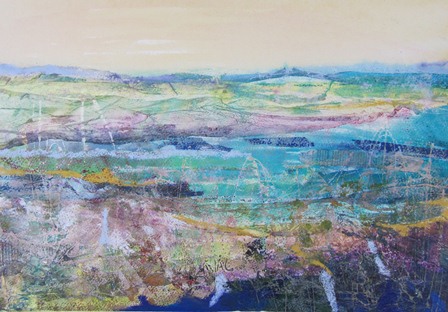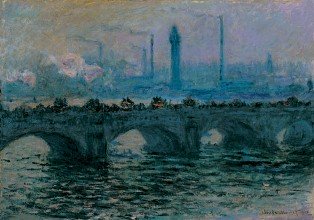|
|
COLOUR PERSPECTIVETo understand colour perspective it is important that we all have a common understanding of the term perspective. When considering perspective and painting it means representing our 3D world on a 2D surface (paper or canvas). So its about having objects that are in the foreground larger than objects in the distance. Colour Perspectiveis very important if you want the viewer of your painting to see depth in it. Shades, Tones and Warmth of ColourThe basic rule, you need to follow for this type of perspective is that objects closest, in the foreground will have the darkest shades.
This photograph illustrates the rule perfectly:the darkest tones of the 'blue'sea are in the foreground.As the sea gets further away ... into the distance, towards the horizon the tones get paler. A fantastic way of checking that your tonal values (that is to say your colour perspective) is correct is by squinting your eyes as you look at your work. darkest tones in the foreground mid tones around your middle distance palest tones far away, in the distance
Also remember objects that are closest to the foreground should be captured in warm tones. Strong tones and warm shades seem to come forward out of a painting, whereas softer tones and cooler colours recede. Using these tricks of the eye help you to create colour perspective also sometimes called atmospheric perspective.
How it Looks on Paper
This painting relies totally on tonal values and colour perspective to create a feeling of depth. With out the dark tones of the foreground or palest tones in the distance we would have no feeling of perspective and depth in this landscape. By looking carefully we can see a rich dark blue has been used in the foreground it is used again around the the mid distance but a paler tone of the colour to achieve the correct perspective.
In this famous painting of London Bridge by Monet it is clear he has used this rule of perspective. Darkest tones in the foreground ... ripples of the River Thames and shadows at the base of London Bridge. Mid tones to capture the bridge and activity on it. Then palest tones are used to depict the London sky line. Can you imagine how it would look if only one tonal value was used? Is the same rule true for other styles of painting such as still life? The photo below shows a very simple still life arrangement of three jars. I think by looking carefully we can see that the shadow at the base of the central jar is a slightly darker tone than the other two. The same is true also of the dark tone at the rim of the jar.
A quick word about PERSPECTIVEI have concentrated on color perspective rather than just perspective as I feel it is less understood. However generally with perspective is the need to remember items in the foreground will be larger than items in mid or far distance. Also in the foreground they will be more detailed and in focus. The most helpful information I have found explaining perspective can be found at 'wikipedia'. If you 'google' this and then search for perspective there is loads of great, clear explainations and diagrams.
|




